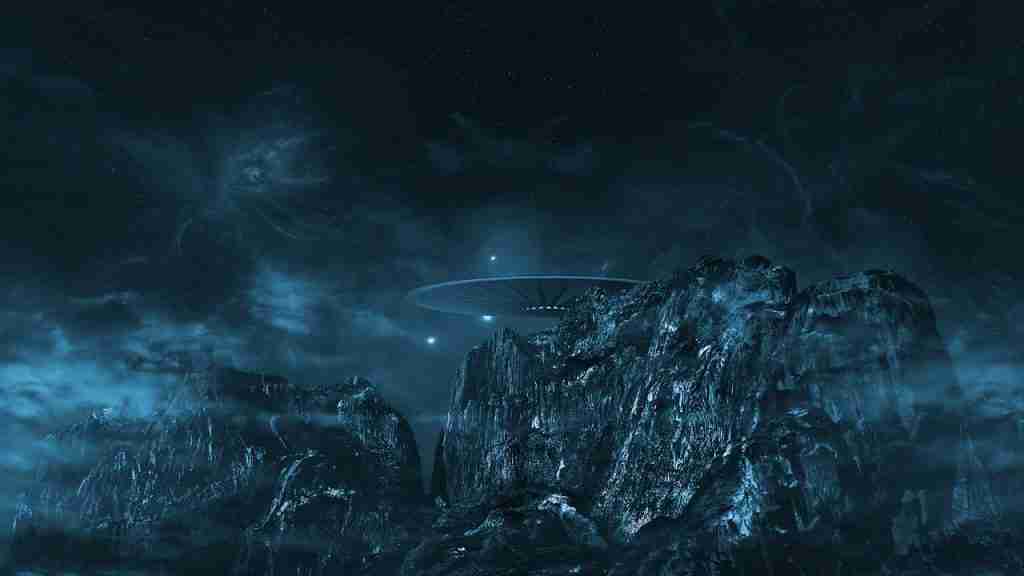25 Fun Facts About Dark Matter You Won’t Believe
1. Dark matter is a form of matter that does not interact with light or any other electromagnetic radiation.
Dark matter is a mysterious phenomenon. It does not react with light or any other type of electromagnetic radiation, meaning we cannot see it through traditional methods like telescopic imaging.
We can still detect its powerful presence due to its interaction with the other forms of matter in our galaxy and beyond.
2. The Existence of Dark Matter was first proposed in the 1930s.
In the 1930s, Swiss astrophysicist Fritz Zwicky was the first to put forward the concept of dark matter. He proposed this form to explain the mass seen in galaxy clusters.
This postulation led to a long series of theoretical and research-based projects focused on better understanding this mysterious substance.
3. Dark Matter makes up approximately 85% of the total mass in the Universe.
Dark matter is an exotic form of cosmic material that has yet to reveal its features. Recently, advanced calculations have demonstrated that it’s estimated to comprise roughly 85% of the total mass in the cosmos.
Astronomers believe this unexplained mass is critical for explaining gravity and expansion on a universal scale.
4. Dark Matter does not appear to be composed of “Normal” matter.

Unconventional Composition
Dark matter is something of a mystery within the field of astrophysics; its composition does not appear to include the standard atomic models that we are familiar with here on Earth.
Instead, this mysterious substance does not interact with electromagnetic forces or show any reflection, absorption, or emission of light, meaning it is fundamentally invisible to us.
5. Dark Matter interacts with gravity.
Dark Matter, which appears to interact through gravity, has a huge impact on the universe; it’s responsible for the formation of galaxies and galaxy clusters.
It shapes our observable universe, creating intricate structures hundreds of millions, even billions, of light-years across.
6. Scientists are still uncertain about the exact nature of Dark Matter and its composition.
Scientists continue to grapple with understanding the true nature of dark matter. Looming unanswered questions include: What is dark matter composed of? Is it made up of yet unknown particles? Or could it be more intangible phenomena, like vacuum energy or extra dimensions?
Despite countless hours of research, the exact makeup of dark matter remains a mystery to this day. With each passing discovery, though, the scientific community inches closer to forming an answer.
7. Some theories propose the existence of “Dark Matter galaxies” that are composed entirely of Dark Matter.
Astronomers have proposed an intriguing concept: dark matter galaxies. These mysterious galaxies are hypothesized to be composed entirely of dark matter.
Such galaxies could contribute significantly to the universe’s unseen mass and explain many things that current accepted theories cannot. Detailed observations have revealed hints in various astronomical findings that suggest this idea of dark matter galaxies is plausible.
But as of now, much more research needs to be done before reaching a consensus on this theory. With increased data and further technological advancement, we may come closer to uncovering the truth about these “dark matter galaxies.”
8. The existence of Dark Matter can be inferred through its gravitational effects on visible matter.

Dark Matter’s gravitational pull.
We have observed that the orbits of stars and galaxies appear to be affected by forces beyond their visible mass.
This led physicists to postulate the presence of dark matter, which is too faint to be directly detected but has a mass five times greater than all the ordinary matter found in our universe.
This mysterious form of matter can be correlated to common phenomena such as gravitational lensing and bulging galactic rotation curves.
9. Dark Matter does not seem to clump at the center of galaxies like “normal” matter does.
The Dark Matter often starkly contrasts its so-called ‘normal’ counterpart.
For example, whereas ordinary matter is known to have a concentration around the center of galaxies, dark matter exhibits quite a different phenomenon.
Instead, evidence suggests that it forms a dispersed halo surrounding them.
10. The study of Dark Matter is interdisciplinary, involving particle Physics, Astrophysics, and Cosmology.
The pursuit to unravel the mysteries of Dark Matter has spanned centuries, proving that this study area touches many disciplines.
From particle physics and astrophysics to cosmology, understanding the nature of dark matter continually presents a unique set of challenges — challenging us to employ new tactics and view the universe in different ways.
11. The Particle Physics experiments to detect Dark Matter include the Large Hadron Collider and underground detectors.
Scientists have extensively experimented on Particle Physics in a bid to approach the much-talked-about question behind dark matter and its role in the wider cosmic architecture.
With this goal in mind, a range of advancements has been made. Specifically, innovations such as the Large Hadron Collider and a selection of underground detector systems, such as XENON1T, LUX, and PandaX, have been deployed.
12. The Presence of Dark Matter can also be inferred through its Gravitational Lensing Effect.
Dark Matter is difficult to detect but is believed to make up most of the universe’s mass. Its existence and distribution can be inferred by its gravitational lensing effect.
This occurs when an object’s gravity bends light moving around it, causing occurrences such as stretching galaxies into arcs of scattered light we observe in the night sky.
Observing these features allows astronomers to map potential sources and evidence of dark matter’s influence over our cosmic landscape.
13. Dark matter may be part of the universe’s elusive “missing mass” problem.
Scientists have hypothesized that dark matter plays a role in the enigmatic issue of “missing mass” in our universe. In doing so, they have posited that dark matter may account for a part of this mysterious void in the composition of interstellar bodies.
Does it really exist? Differing research camps of physicists tug their hair in puzzlement, besieged by a mysterious force keeping them from getting the answer.
14. Dark matter may be responsible for galaxies’ observed flat rotation curves.
Astronomers have observed the rotation of stars in galaxies, called “rotation curves,” and noticed that they do not show the expected drop-off pattern. This has led to postulations that something beyond the normal form of matter is at play.
As such, scientists have suggested that dark matter may lie under this discrepancy, possibly providing the extra mass needed to create this heavier halo during galaxy formation.
15. Some scientists propose the existence of a new kind of “Dark” force.
Some scientists propose the existence of a new kind of “dark” force to explain the behavior of dark matter. This force would be in addition to the four known fundamental forces.
The exact nature of this proposed dark force is still unknown, but it could provide new insights into the strange behavior of dark matter.
16. The study of Dark Matter has important implications for our understanding of the universe and the laws of physics.

Mysteries and Physics Laws.
Dark matter has perplexed researchers for decades, and its study has many implications for our understanding of the universe.
Scientists have uncovered some answers regarding its composition, yet much remains unknown.
This ongoing research into dark matter helps us gain a greater insight into how the universe operates, challenging our traditional beliefs about physics and the laws of nature.
17. Dark matter is currently invisible and cannot be directly observed.
Dark matter is, by nature, invisible and cannot be directly observed. Yet Scientists have devised a method for detecting it indirectly: first and foremost, it is through the power of its gravitational effects that Scientists can study dark matter and work to unveil its mysteries.
Drawing from advancements in diverse technology, from gravitational lensing to sensitive detectors, Scientists have obtained more information regarding the omnipresent but elusive substance, better ranging our understanding than ever before.
18. Dark matter could potentially be composed of primordial black holes.
Dark matter is a mystery that has puzzled scientists for centuries. Though many theories have been proposed, none have been proven. One interesting possibility suggests dark matter could be composed of primordial black holes; remnants of the universe’s earliest days that still remain mysteriously hidden away in space.
What exactly is a primordial black hole? These ancient objects formed shortly after the Big Bang and resulted from reionization – when space heated up to transition electrons away from hydrogen due to intense radiation.
19. Some theories suggest that dark matter could be composed of very lightweight.
Amid debates about its true nature, various theories have suggested an alternate explanation for the mysterious entity called dark matter: an elusive form of matter not made up of protons and neutrons, but particles that are far lighter and weaker in their interactions.
These particles are called ‘sterile neutrinos,’ possessing properties that make them difficult to detect. They whizz through our planet with unexplainable accuracy, garnering respect despite ongoing queries about their true identity and purpose.
20. The Dark Matter halo could contain very low-mass dark matter particles.

Dark Matter halo structure.
Scientists have long questioned what might make up the dark matter halo we observe in galaxies. One suggestion is it could be very low-mass dark matter particles called WIMPs, otherwise known as Weakly Interacting Massive Particles.
These strange massive particles interact weakly with other matter using physical forces of electroweak, gravitational, and/or nuclear forces.
21. Dark Matter, if made of WIMPs, could be detectable through nuclear interactions in underground labs.
Scientists propose that dark matter is evidence of Weakly Interacting Massive Particles (WIMPs). Detailed glimpses into the nature of dark matter might be possible by observing the particles’ interactions with nuclei detected in underground detectors.
Understanding these elusive elements will deepen our knowledge about the universe’s composition and behavior.
22. Some theories suggest that dark matter might consist of a new fundamental particle called an Axion.
Unprecedented progress has been made in understanding the Universe around us – thanks in part to new information indicating the existence of dark matter.
To that end, several models have postulated that this mysterious material might actually consist of a revolutionary fundamental particle known as an axion.
Research indicates that it could be involved in many interfaces, particularly those between matter and other exotic forms such as radiation or gravity.
23. Dark Matter Could Have Influenced the Extinction of Dinosaurs.
A physicist proposes that dark matter may have caused the extinction of dinosaurs by redirecting a comet towards Earth, explored in the book Dark Matter and the Dinosaurs. This theory connects cosmology and paleontology, suggesting that unseen dark matter altered comet paths, potentially leading to the mass extinction event.
The book delves into various scientific disciplines to explain dark matter’s potential impact on Earth’s history despite uncertainties. It offers a thought-provoking exploration of complex scientific concepts intertwined with Earth’s evolutionary past.
24. Some theories propose that Dark Matter could be fluid with negative mass.

as a fluid with negative mass. 🌌
Certain theories suggest that dark matter, the source behind an estimated 85% of the universe’s mass, could be a fluid possessing negative mass. This hypothetical force is known simply as “dark fluid.”
This proposition effectively suggests the possibility of dark energy counteracting ordinary energy, potentially resulting in a greatly balanced or even canceled-out universe. If proven true, this idea stands to revolutionize how we understand gravity as we currently know it.
25. Another proposed form of Dark Matter is the so-called fuzzy dark matter.
The Proposed solutions to dark matter have extended far beyond the conventional. One such example that has come to light, so to speak, is “Fuzzy Dark Matter.”
It stands out from other depictions given its composition– ultra-light bosons specifically. Ultra-light bosons are distinct contrasts to conventionally heavier forms we’re used to theorizing about.
Studies have focused on the potential of these two components to influence certain physical or astronomic effects in unprecedented ways.
FAQs
Dark matter is crucial because it composes around 27% of the universe and plays a fundamental role in the structure and evolution of galaxies and the cosmos. Its gravitational influence holds galaxies together and affects the large-scale distribution of matter. Understanding dark matter is vital for comprehending the universe’s composition and its underlying physical laws.
Dark Matter and Dark Energy are distinct cosmic phenomena. Dark Matter is an invisible substance that contributes to the universe’s mass, influencing the motion of galaxies and stars through its gravitational pull. In contrast, Dark Energy is a mysterious force that drives the universe’s accelerated expansion, working against gravity’s pull. While Dark Matter acts to cluster and hold cosmic structures together, Dark Energy appears to have a repulsive effect, causing the universe to expand at an increasing rate. Both are crucial in understanding the universe’s composition and evolution yet remain largely mysterious in their nature.
Swiss astronomer Fritz Zwicky first proposed the concept of dark matter in the 1930s. He noticed that the visible mass of galaxies wasn’t enough to explain their observed motions. Zwicky’s pioneering observations hinted at the presence of unseen matter exerting gravitational effects, leading to the notion of dark matter.
Dark matter refers to hypothetical particles that don’t emit light or energy that we can detect. It doesn’t interact with electromagnetic forces, making it transparent and essentially invisible. Despite being elusive, its presence is inferred from its gravitational impact on visible matter, stars, and galaxies.
Dark Matter is not gravity but a distinct form of matter that exerts gravitational effects. Due to its mass, it contributes to the overall gravitational forces in the universe, influencing the motion of galaxies and stars. Unlike normal matter, it doesn’t emit light or energy, making it invisible and detectable only through its gravitational impact. Its presence and distribution play a crucial role in shaping the structure and dynamics of the cosmos.







